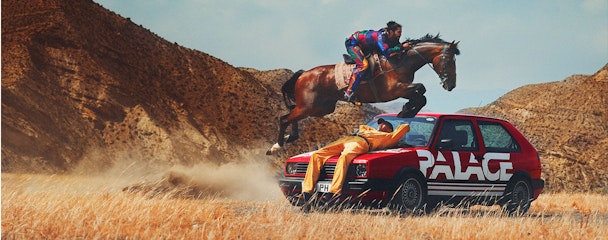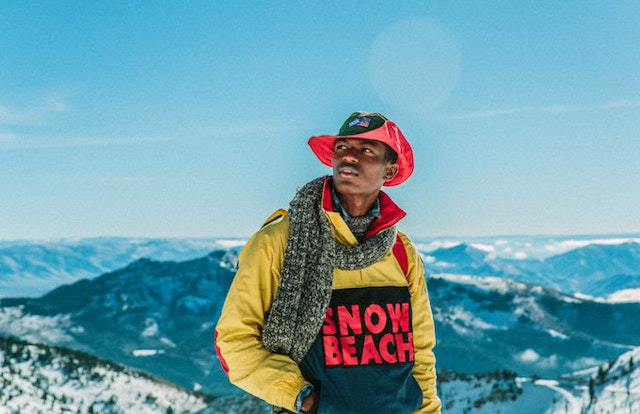Ralph Lauren’s CMO on retelling its brand story to ‘reach the kid looking for Supreme’
The strategy behind Ralph Lauren’s recent bump in digital marketing spend lies in its aim to rapidly repackage its core marketing story for a new generation of consumers, before the brand loses relevance amid the streetwear revolution.

Ralph Lauren collaborated with Palace in November 2018
At 52 years old, the fashion house of Ralph Lauren has weathered almost every trend fluctuation of the past half-century. Much of its endurance can be traced back to what was once a pioneering premise: it sold a rarefied, US lifestyle as much as it sold a polo shirt or a sweater.
With the catchphrase “I don't design clothes, I design dreams,” its founder confirmed himself to be an orator of brand storytelling before the term even existed, while his path from the Bronx to the fashion weeks of Paris and Milan only served to cement Ralph Lauren’s reputation as a brand of achievable aspiration.
But now, the company’s shareholders and board want to see it turn this multi-layered brand story into cash.
Chief executive Patrice Louvet is shooting for a $1bn rise in sales between 2018 and 2023, as well as an improvement on operating income and shareholder payout, and has tweaked a number of operating strategies to achieve these figures. The P&G veteran also has given his chief marketing officer the green light on upping marketing budgets by $100m over the five-year period, with digital ad spend rising by 10% between 2018 and 2019.
“We've been pretty clear publicly that marketing's going to be right at the heart of reigniting the growth we want to see,” said Jonathan Bottomley, the chief marketing officer now armed with a nine-figure check. Yet, as a former BBH strategist, he is cognizant his budget increases will be traced directly by shareholders to Ralph Lauren’s bottom line, and as such, is unlikely to be splashing the cash on highly experimental media plans or campaign launches.
“The return on every dollar that we have as a publicly listed company – and as a company that's made a commitment to our shareholders to invest more in marketing – has been pretty central to the whole way that we thought about marketing here as a business, clearly,” he said.
In today’s marketing landscape, that is often shorthand for consolidating agency partners. And Bottomley’s consolidation came just over 10 months after Louvet unveiled his five-point plan to boost sales. The brand skimmed its media roster from approximately 12 to four agencies, handing the bulk of its business to Zenith – a previous partner – in April.
Bottomley said it was the Publicis shop’s digital expertise, as well as its global reach, that saw it “rise to the top”.
“We think pretty differently now about the path to purchase then we did maybe two, three or four years ago,” he explained. “[Zenith] are able to help us manage the knowledge that we have, and the knowledge that our partners have, and help us ... understand more about the consumer that maybe we don't have right now. And then there’s that touch – that ability to tell our brand story, to keep things feeling as if they are very Ralph Lauren, no matter where the consumer sees them, whether they're messages or images.”

Zenith has been charged with putting together an “omnichannel picture” of the Ralph Lauren consumer, comprising their habits, interests, purchase roots and inspirations. Right now, its first-party data is strong, and Bottomley would like to see it better overlaid with information from its partners platforms “whether they're digital platforms ... or more traditional media platforms”.
But as Ralph Lauren seeks growth in the billions, it also needs to speak to a new generation of customers. Earmarked consumers include Chinese shoppers, which registered a 19% growth in sales in the company’s third quarter earnings for 2018, and younger fashionistas obsessed with streetwear – a trend that consultancy Bain & Company cited as crucial to the 5% global bump in luxury personal goods last year.
Rather than overhauling its marketing and design to capitalize on consumers’ desire for sneakers and baseball caps, Bottomley and Lauren are working to “craft and curate” their wealth of brand stories and archive around the theme of streetwear.
“We’re thinking about how we can diversify what we say and what we stand for in a way that respects what consumers are looking for,” said Bottomley, citing the brand’s recent resurfacing of its 90s sportswear ranges as a prime example.
“We've marketed those in a very bespoke, very direct way to newer audiences. We can market on one hand to someone who's been into the brand for 20, 30 years, who wore Polo Sport back in the 90s, but we can also market that product mix and that story to a younger kid who's looking for Supreme.
“We’ve done that with a combination of very precisely targeted digital messaging, and experiences in our stores and key wholesale partners to make it feel as if there is a modern, fresh, exciting message coming from Ralph Lauren that's done in a way that feels absolutely authentic. We're not overreaching – we’re doing it around product ranges that have that authenticity and culture going back many years.”
Ralph Lauren is also repackaging its brand story to reach a broad selection of consumers by testing assortment differentiation. The product ranges carried in Macy’s, for example, are not the same as those sold through its e-commerce site, because a younger shopper looking for streetwear is more likely to purchase through its DTC paths (described by Bottomley as a “massive” opportunity for growth). Conversely, an older consumer looking for a classic polo shirt is more likely to shop through its retail partners.
The final piece of this market-based “tailoring” of the core brand story is Ralph Lauren’s own flagships, which it sees as experiential pieces of theatre. But again, the brand has shifted away from cookie-cutter merchandising and store design to a more curated approach, dependent on the customers it’s trying to reach in each area.
“I think it's now much more about really understanding what consumer is going to be buying in, say, one of our Madison Avenue stores, or in one of the newer stores that we're opening in Europe or China,” said Bottomley.
The key to Ralph Lauren’s future success – including that $1bn sales increase – will be rooted in its ability to riff off its heritage while fine tuning its ability to listen to its potential customers: the consolidation of media into Zenith is arguably its biggest commitment to the latter.
But it's the big statements, such as its collaboration with streetwear brand Palace, that get called out in earnings for "elevating" the brand. It’s this kind of deal that will really bring new shoppers into the Ralph Lauren fold, and shape what the brand will look like in the years to come.

